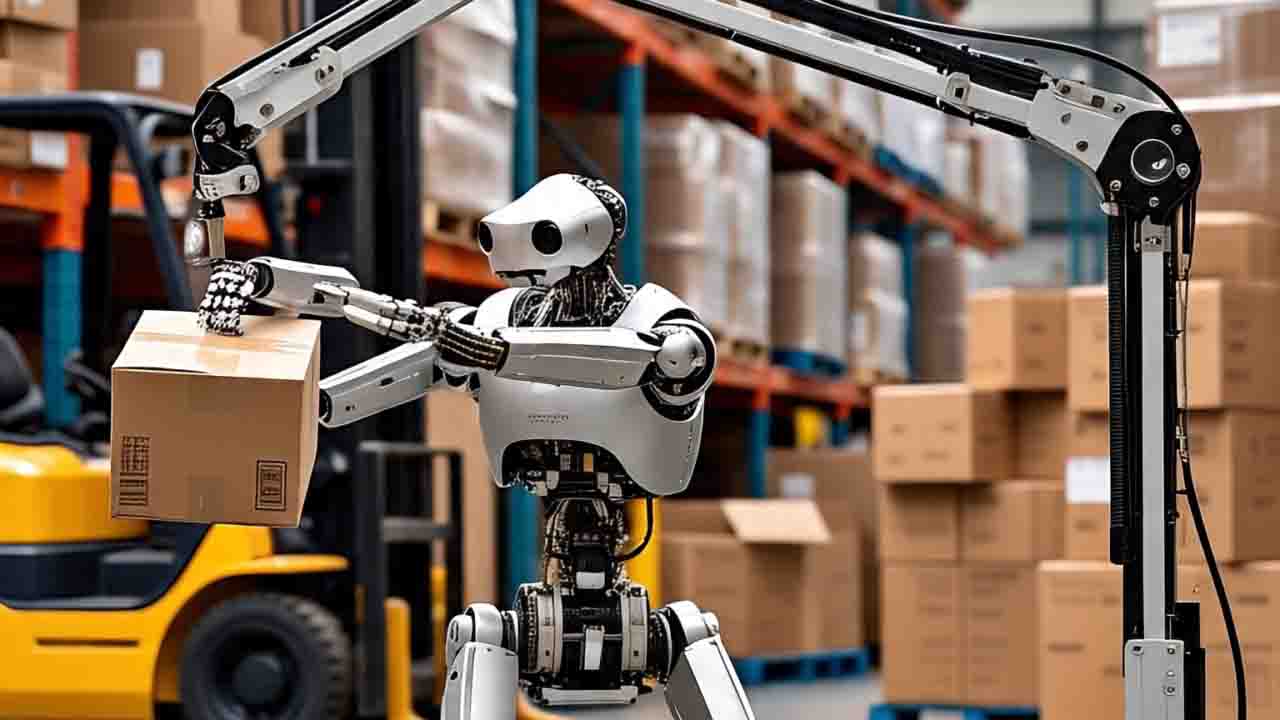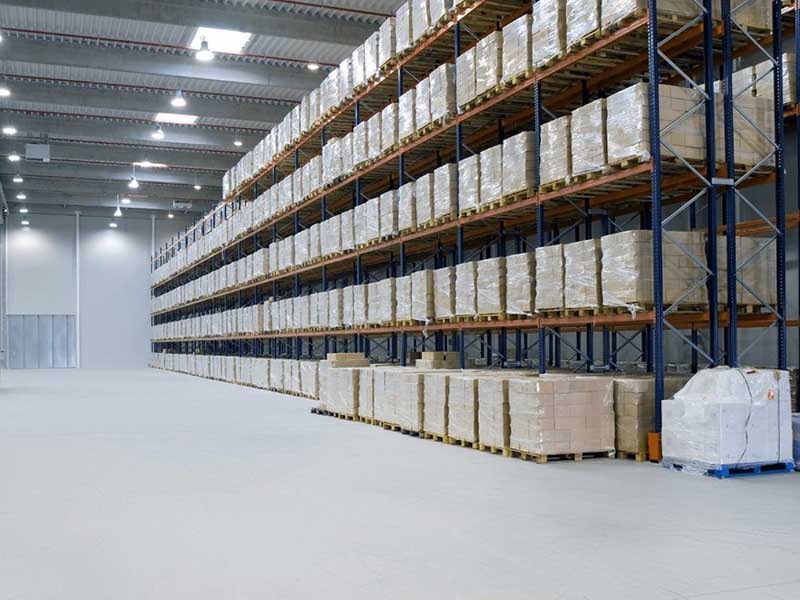The Blackmore Group – Solusi Inovatif Logistik dan Perdagangan Companies adopting digital twins cargo flows now test entire logistics scenarios virtually before a single container leaves the warehouse.
Why Digital Twins Matter for Modern Supply Chains
Global logistics faces frequent shocks, from port congestion to sudden demand spikes. Therefore, leaders need visibility and flexibility. A digital twin of cargo flows provides both in a single, connected environment.
In practice, digital twins cargo flows mirror the real movement of goods, containers, vehicles, and documents. Data from ERPs, transport management systems, IoT sensors, and partners feeds a virtual replica of operations. As a result, teams see how a disruption spreads and what decisions limit the damage.
Unlike static dashboards, digital twins run forward-looking simulations. They answer questions like “What if this port closes?” or “How will a promotion affect capacity?” Even so, the value depends on clean data, clear objectives, and tight collaboration across departments.
What Exactly Is a Digital Twin of Cargo Flows?
A digital twin is a living digital model continuously updated with real-time data. For logistics, it focuses on how cargo moves through the network. Consequently, digital twins cargo flows connect orders, inventories, routes, carriers, and service-level constraints.
The model includes transportation modes, transit times, cut-off times, customs processes, and warehouse handling. It also reflects costs, capacities, and service agreements. Meanwhile, automation rules help simulate choices, such as re-routing around strikes or weather events.
Because the twin runs on operational data, planners experiment safely. They can adjust sourcing locations, hub selection, or carrier mixes. On the other hand, the physical network keeps running normally while ideas are stress-tested virtually.
Core Benefits of Simulating Cargo Flows Before You Ship
Organizations that invest in digital twins cargo flows see advantages across cost, service, and resilience. The gains come from deciding proactively instead of reacting late.
1. Anticipate Disruptions and Bottlenecks
Simulation allows teams to rehearse disruptions before they occur. They can model port closures, customs delays, or reduced carrier capacity. As a result, they identify weak links in the network early.
The twin shows how a delay at one node affects downstream plants, customers, and inventory health. Therefore, managers can set triggers for automatic re-routing, mode shifts, or safety stock deployment.
2. Optimize Routes, Costs, and Service Levels
Digital twins cargo flows help quantify trade-offs between cost and speed. Planners compare air versus ocean, direct versus hub routes, and alternative ports. They see impacts on lead times, emissions, and landed cost in one view.
Read More: How advanced logistics platforms are reshaping real time global shipping visibility
Instead of relying on intuition, optimization engines search thousands of options. They identify route combinations that respect service levels while improving margins. After that, results can feed directly into transport planning tools.
3. Improve Collaboration Across the Supply Chain
When everyone sees the same virtual supply chain, conversations change. Finance understands the cost of service promises. Sales sees constraints behind delivery dates. Meanwhile, operations explain risks using concrete scenarios.
Because digital twins cargo flows visualize consequences, teams align on realistic plans faster. Stakeholders test ideas together and choose options backed by numbers, not opinions.
4. Support Sustainability and Emissions Targets
Many companies must reduce logistics emissions while staying reliable. A digital twin helps compare emissions by mode, route, and consolidation strategy. Therefore, planners find greener paths that keep customers satisfied.
They can test slow steaming, modal shifts, or alternative hubs. Even so, they maintain clarity on how each decision affects transit time and inventory positions.
How to Build a Digital Twin for Cargo Flows
Implementing digital twins cargo flows requires structured steps. Technology alone is not enough; process and governance matter equally.
1. Define Clear Use Cases First
Start with specific questions. For example, focus on reducing premium freight, improving on-time delivery, or managing seasonal peaks. Clear goals shape which data you collect and which scenarios you simulate.
Without focus, the model becomes too complex and hard to use. Therefore, begin with one lane, region, or product family, then scale.
2. Integrate Accurate and Timely Data
A digital twin depends on reliable inputs. Connect order, shipment, inventory, and capacity data from core systems. In addition, bring in external data, such as port status, weather, and geopolitical alerts.
Data quality rules, validation, and monitoring are essential. Otherwise, digital twins cargo flows produce misleading recommendations.
3. Model the Network and Business Rules
Next, formalize how your supply chain behaves. Map facilities, lanes, transit times, tariffs, and constraints. Include rules for consolidation, lead-time buffers, and carrier selection.
The more accurately these rules reflect reality, the more trusted the twin becomes. Nevertheless, avoid overfitting. Keep the model understandable for planners who use it daily.
4. Enable Scenario Planning and “What-If” Analysis
Scenario tools turn static models into decision engines. Users must be able to change demand, capacity, or lead times and instantly see impacts.
With digital twins cargo flows, planners compare scenarios side by side. For instance, they evaluate the effect of a new DC, a different incoterm, or shifting volumes between carriers.
Real-World Use Cases Across Industries
Different sectors use digital twins cargo flows in distinct ways, but the underlying logic stays similar.
Retail and E‑commerce
Retailers simulate Black Friday or major campaigns before they launch. They test promotions, regional assortments, and fulfillment paths. As a result, they reduce stockouts and avoid overloading certain hubs.
Omnichannel players also simulate ship-from-store strategies. They see how new rules affect last-mile costs, delivery speed, and store inventory health.
Manufacturing and Industrial
Manufacturers rely on stable inbound flows to keep plants running. With digital twins cargo flows, they test supplier changes, nearshoring, or dual sourcing.
They can see how disruptions impact production schedules and customer orders. Therefore, they decide which components deserve higher safety stocks or alternative routings.
Pharma and Healthcare
Pharma and healthcare companies handle temperature-sensitive shipments and strict regulations. Simulation helps protect product integrity and patient service.
They model packaging types, cold-chain routes, and time windows. Meanwhile, digital twins cargo flows highlight where delays could cause spoilage or compliance issues, prompting preventive actions.
Keys to Successful Adoption and Next Steps
Success with digital twins cargo flows requires more than a one-time project. It needs continuous learning and adoption.
First, appoint owners responsible for model accuracy and user feedback. Then, embed scenario reviews into regular planning cycles. As a result, leaders routinely base decisions on simulated outcomes.
Second, invest in skills. Planners must understand both analytics and operations. Training helps them translate simulation outputs into concrete actions.
Third, connect the digital twin to execution systems. When a preferred scenario is chosen, plans should flow directly into transport booking and warehouse tasks. After that, performance data should loop back into the model.
Over time, organizations that rely on digital twins cargo flows build more resilient, cost-effective, and sustainable supply chains. They stop guessing and start learning from every simulated shipment before committing a single real container to move.
Ultimately, companies that master digital twins cargo flows turn uncertainty into an advantage, using simulated insight to deliver reliably even when conditions shift without warning.




